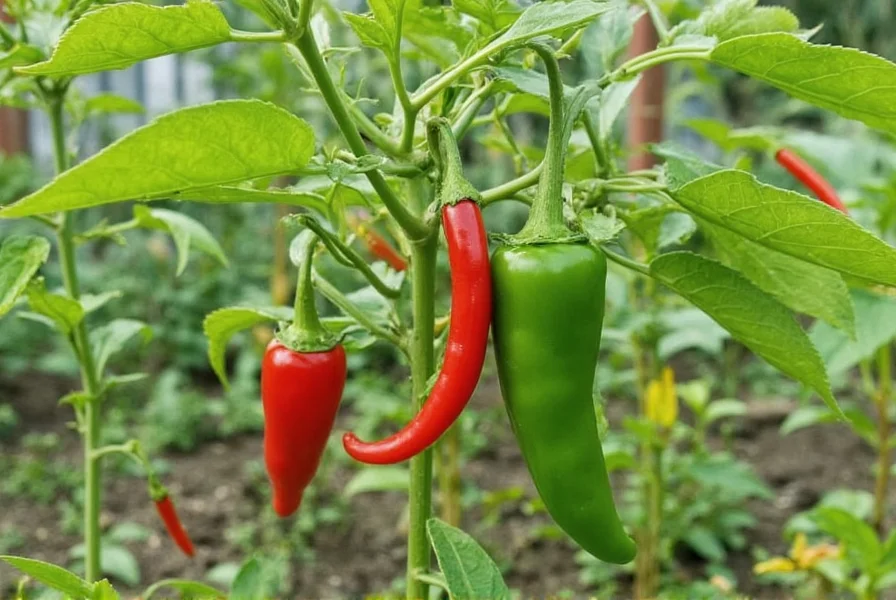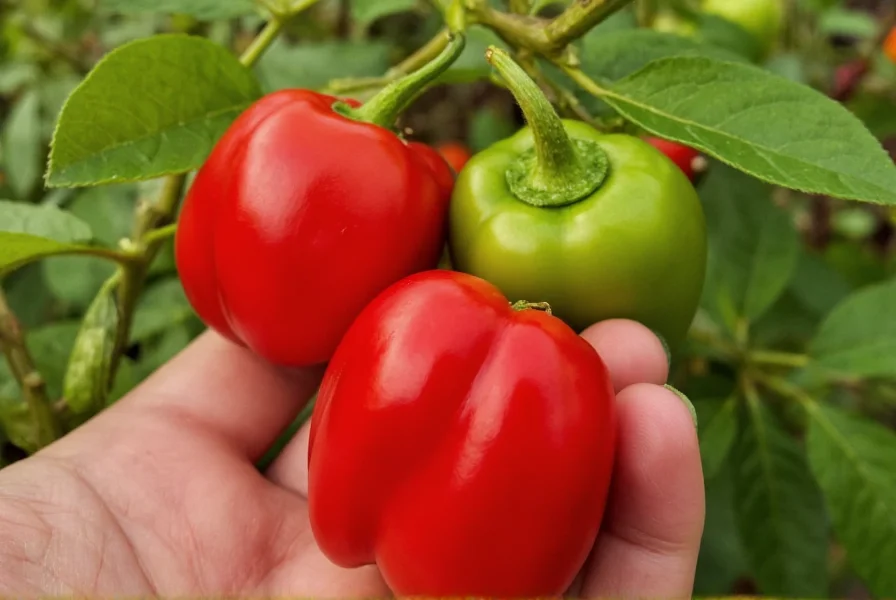When searching for information about marconi pepper characteristics, you'll discover these unique Italian sweet peppers represent a culinary treasure with specific attributes that distinguish them from common bell peppers. Understanding what defines marconi peppers helps home cooks and gardening enthusiasts make informed decisions about their use and cultivation.
Physical Characteristics of Marconi Peppers
Marconi peppers feature a distinctive elongated shape that tapers to a pointed end, typically measuring 6-8 inches in length and 2-3 inches at their widest point. Unlike standard blocky bell peppers, these Italian varieties display graceful curvature that makes them visually distinctive in the produce section. Their skin transitions through color stages: beginning as pale green, maturing to yellow, then orange, and finally reaching a deep, vibrant red when fully ripe. The walls of marconi peppers are slightly thinner than standard bell peppers but thicker than frying peppers like cubanelles, creating an ideal balance for various cooking methods.

Flavor Profile and Heat Level Analysis
Despite their slender appearance that might suggest heat, marconi peppers register between 0-500 Scoville heat units, placing them firmly in the sweet pepper category. Their flavor profile features a delicate sweetness with subtle earthy notes and a refreshing crispness when eaten raw. When roasted, marconi peppers develop complex caramelized sugars that enhance their natural sweetness without bitterness. This mild heat level makes them accessible to children and those sensitive to spicy foods while still providing the satisfying crunch and flavor of premium peppers. Understanding marconi pepper heat level is essential for recipe planning, as their sweetness intensifies beautifully when cooked compared to standard bell peppers.
Culinary Applications and Cooking Techniques
Professional chefs prize marconi peppers for their exceptional performance in Mediterranean cuisine, particularly Italian dishes where their shape and flavor complement traditional preparations. The tapered form makes them ideal for stuffing with rice, cheese, or meat mixtures that distribute evenly throughout the pepper's length. When roasting marconi peppers, their thinner walls than standard bells allow for quicker cooking while maintaining structural integrity—typically requiring 20-25 minutes at 400°F until blistered and tender. Sliced lengthwise, they provide elegant presentation in salads, sandwiches, and antipasto platters. For those exploring how to use marconi peppers in cooking, consider their superior performance in pimientos de padrón-style preparations where their mild heat won't overwhelm delicate flavors.
| Pepper Characteristic | Marconi Pepper | Standard Bell Pepper | Cubanelle Pepper |
|---|---|---|---|
| Shape | Elongated, tapered | Blocky, square | Long, slightly curved |
| Length | 6-8 inches | 3-4 inches | 6-7 inches |
| Wall Thickness | Moderate | Thick | Thin |
| Heat Level | 0-500 SHU | 0 SHU | 0-1,000 SHU |
| Best Cooking Method | Roasting, stuffing | Raw applications | Frying, sautéing |
Growing Marconi Peppers: Essential Information
Gardeners interested in growing marconi peppers should note these Italian varieties require similar conditions to other sweet peppers but with some specific considerations. They thrive in warm climates with at least 6-8 hours of direct sunlight daily and prefer well-draining soil with consistent moisture. The growing season typically spans 70-80 days from transplanting, with peppers ready for harvest when they reach full size and begin changing color. Unlike standard bell peppers that are often harvested green, marconi peppers develop their characteristic sweetness when allowed to ripen fully to red. For optimal results when growing marconi peppers, provide sturdy support as the mature plants can become top-heavy with their elongated fruit. These peppers perform well in containers, making them suitable for patio gardening in urban environments.

Nutritional Benefits and Storage Recommendations
Nutritionally, marconi peppers offer impressive benefits comparable to other sweet peppers. They're exceptionally rich in vitamin C (providing over 150% of daily needs per medium pepper), vitamin A, and antioxidants like beta-carotene and lycopene, particularly when fully ripened to red. These nutrients support immune function, eye health, and cellular protection against oxidative stress. For maximum freshness, store unwashed marconi peppers in the crisper drawer of your refrigerator for up to two weeks. For longer preservation, consider roasting and freezing them in airtight containers—a perfect solution for preserving the harvest from your marconi pepper garden. Understanding proper marconi pepper storage techniques ensures you maintain their crisp texture and nutritional value throughout the year.
Substitution Guidance and Availability
When marconi peppers aren't available, understanding suitable substitutes becomes essential for recipe success. The closest alternative is cubanelle peppers, which share a similar elongated shape though with slightly thinner walls and potentially more variable heat. Standard red bell peppers make acceptable substitutes in roasted applications but lack the elegant tapered shape that makes marconi peppers ideal for stuffing. For those wondering where to buy marconi peppers, check specialty grocery stores, farmers markets during summer and early fall, or Italian specialty markets. Some progressive supermarkets now carry them seasonally, particularly in regions with strong Italian culinary influences. Gardeners seeking marconi pepper seeds can find them through specialty seed catalogs focusing on heirloom and Italian varieties.
Frequently Asked Questions
Are Marconi peppers spicy?
No, Marconi peppers are not spicy. They register between 0-500 Scoville heat units, placing them firmly in the sweet pepper category with negligible heat. Their flavor profile is predominantly sweet with subtle earthy notes, making them accessible to those who prefer mild peppers.
How do Marconi peppers differ from regular bell peppers?
Marconi peppers differ from standard bell peppers primarily in shape and wall thickness. They feature an elongated, tapered form (6-8 inches long) compared to the blocky square shape of bell peppers. Marconi peppers have moderately thick walls—thinner than bell peppers but thicker than frying peppers like cubanelles—making them particularly well-suited for roasting and stuffing applications.
What's the best way to prepare Marconi peppers?
The best preparation method for Marconi peppers is roasting. Their moderate wall thickness allows them to blister beautifully at 400°F for 20-25 minutes while maintaining structural integrity. They're also excellent for stuffing due to their tapered shape, which allows fillings to distribute evenly. Unlike standard bell peppers that are often used raw, Marconi peppers develop exceptional caramelized sweetness when cooked.
Can I grow Marconi peppers in containers?
Yes, Marconi peppers grow well in containers. Choose a pot at least 12-14 inches in diameter with good drainage. Fill with quality potting mix and provide consistent moisture and at least 6-8 hours of direct sunlight daily. Container-grown Marconi peppers may require more frequent watering than garden-planted ones but will produce well with proper care and support for their fruit.
When are Marconi peppers in season?
Marconi peppers are typically in season from mid-summer through early fall, depending on your climate. They become available in farmers markets and specialty grocery stores starting in July and continuing through September in most regions. The peak season for the best flavor and availability is August through early September when they've had time to fully develop their characteristic sweetness.











 浙公网安备
33010002000092号
浙公网安备
33010002000092号 浙B2-20120091-4
浙B2-20120091-4